Estonian Food Dishes: Basic Overview
Common Ingredients
Common Cooking Methods
Courses
Meals
Key Taste
Eating Etiquette
Meal Presentation
Culinary Festivals
Influence and Fusion
Popular Types of Estonian Dishes
-
Desserts
Estonian desserts often mix sweet and creamy textures, featuring ingredients like fruits, berries, and dairy.
They range from light, whipped creations to denser, bread-based treats, appealing to those who enjoy a sweet finish.
-
Cakes and pastries
In Estonia, cakes and pastries often celebrate buttery and cinnamon flavors, sometimes intertwined with nuts or cocoa.
These baked goods are perfect for festive occasions or as a warm treat during the colder months.
-
Porridge
Estonian porridges are wholesome, and commonly made from grains like barley or oats.
They can be savory, paired with meats and vegetables, or sweetened with fruits and berries.
Estonian dishes blend traditional elements with influences from nearby countries, such as Scandinavian, German, Russian, Latvian delicacies, and Lithuanian treats, reflecting its position in the Baltic region.
Staples include rye bread, pork, potatoes, and dairy products. The country’s cuisine features a variety of cold dishes such as pickles, meats, sausages, potato salad, and rosolje, a signature dish made with beetroot, potatoes, and herring.
Fish, particularly herring, smoked eel, and Baltic dwarf herring, play a significant role. Soups are central, from broths mixed with vegetables to sweet soups made from black bread and apples. Desserts are diverse, from traditional kama and kissell to Soviet-era birthday treats.
When discovering the fares of Estonia, you should not miss the chance to learn about the country’s seasonal fares alongside some interesting beverage choices.
19 Most Popular Estonian Dishes with Filters
Below are the most well-known Estonian dishes, carefully sorted according to their popularity. Check out these specialties using the filter system in order to see them in alphabetical order, taste, key ingredients, dish types, cooking methods, and even global popularity.
Also, I’ll leave you with some exciting categories about Estonia’s popular, traditional, national, and street food dishes:
European Sprat
- Street Food
- Traditional
European sprat is a small marine fish belonging to the Clupeidae family, prized for its white-gray flesh and prevalent in European seas, including Estonia.
As a country with a rich fishing tradition, sprat holds a vital place in Estonian cuisine. This versatile fish features in numerous Estonian recipes, enjoyed in various forms, such as canned, salted, fried, or smoked.
Kiluvõileib
- Traditional
Kiluvõileib is an iconic Estonian open-faced sandwich featuring a marinated sprat filet atop a slice of rye bread. People often garnish it with poached or hard-boiled eggs, green onions, and fresh herbs.
This fish sandwich is widely available in local restaurants, especially during special events.
Verivorst
- Street Food
- Traditional
Verivorst is a traditional Estonian blood sausage with pig’s blood, barley groats, and other spices. Although it is an excellent appetizer for an everyday meal in Estonia, it is primarily sold and consumed during the winter months as a traditional Christmas dish.
This dark blood sausage is also a national dish of Estonia cuisine. Additionally, verikäkk (black pudding) can be considered a variation of verivorst.
Often, Estonians cook these blood sausages in ovens or simply frying them in a pan. For serving, locals prioritize options like lingonberry jam, butter, sauerkraut, or sour cream for enjoying with verivorst.
Sült
- Traditional
Sült is a traditional Estonian aspic, or meat jelly, crafted primarily from pork. This savory dish is made using parts of the pig rich in connective tissue, like trotters, resulting in a gelatinous consistency akin to a solidified soup.
In modern renditions, sült may also incorporate leaner cuts and pork scraps for a contemporary twist. Meat jelly remains a cherished appetizer in Estonia, celebrated for its unique texture and flavor.
Mulgikapsad
- Traditional
Mulgikapsad is a traditional Estonian sauerkraut, pork, and barley dish that can be served as a complete meal with boiled potatoes and fermented milk. Like all sauerkraut dishes, mulgikapsad tastes better on the second day.
Estonian villagers used to make this classic mix with barley groats every Thursday and Sunday, but pearl barley is also a great choice.
Rukkileib
- Street Food
- Traditional
Rukkileib is a type of black bread of Estonian cuisine, accompanying nearly every savory dish. This black rye bread, favored over white bread, boasts a richer color, a more robust flavor, and a higher fiber content.
A staple throughout the Middle Ages in various European countries, including Estonia, Iceland, Denmark, and Sweden, rukkileib is believed to have been introduced to Britain around 500 AD.
It features prominently in numerous Estonian recipes, such as kiluvõileib.
Leivasupp
- Traditional
Leivasupp is a cherished traditional Estonian rye bread soup. This delightful dish combines the thickness of mashed rye bread with the sweetness of fruit juice, raisins, and cinnamon, creating a creamy and sweet soup.
It’s an ingenious solution for utilizing stale dark rye bread, further enriched when served with cream, milk, and nuts. Commonly enjoyed warm or chilled, it is often savored as a dessert or a light afternoon snack, and even as a favored main course during school lunches in Estonia.
Rosolje
- Traditional
Rosolje is a fuchsia-colored Estonian salad featuring a delightful combination of bite-sized beet and potato chunks enveloped in a light, creamy sauce.
Typically served chilled, rosolje complements meat dishes or sausages perfectly. While every Estonian family boasts its own unique recipe, the essential ingredients remain potatoes and beets.
The salad’s versatility allows for customization with additions like pickled herring, onions, hard-boiled eggs, or apples.
Mulgipuder
- Traditional
Mulgipuder is a porridge made with mashed potatoes and barley in Estonia.
It’s commonly made with bacon and sautéed onions and served as a main course with rye bread and sour cream or as a side dish to go with other roasted meat meals.
The name of this dish means “Mulgi’s porridge”. Around the second part of the 19th century, residents in southern Estonia (the Mulgi) began making this comforting porridge.
This dish quickly became well-known across Estonia near the end of the century. On the funny side, in Mulgimaa, animals were considered more important than humans, so the locals used to give this porridge to them first.
Kohuke
- Street Food
- Traditional
Kohuke is a popular Estonian sweet snack made from lightly pressed curd bars covered in chocolate. The treat is not only popular among Estonians, but it is also sought-after in other European countries.
Despite the unclear origin, it is still commonly believed that kohuke was initially invented during the time of the Soviet Union. The delightful curd bar was soon a crowd favorite.
Now, this treat comes with new flavors introduced, namely berry, chocolate, coconut, and kiwi.
Vastlakukkel
- Traditional
Vastlakukkel is a traditional sweet roll filled with vanilla cream in Estonia. Although this dessert originated in Sweden, it is considered an irreplaceable part of Estonia’s St. John’s Day celebration.
Also called Midsummer’s Day, St. John’s Day is one of the most celebrated holidays in Estonia, revolving around bonfires, dancing, chanting, and of course, enjoying this delicious vastlakukkel.
In Estonia, these buns come with cardamom-spiced wheat buns along with whipped cream, jam, or marzipan as a filling.
Mannavaht
- Traditional
Mannavaht, or vispipuuro, is a signature Estonian dessert porridge made by cooking lingonberries with wheat semolina and sugar. Once cooked, the mixture is vigorously whipped and cooled down into a mousse-like dessert.
It will then be topped with cream, sugar, and perhaps some fresh berries. Vispipuuro used to be a labor-intensive dish back in the day, as flour needed to be made without the aid of machinery. People often enjoy mannavaht as a breakfast item, especially for children.
Kohupiimakreem
- Traditional
Kohupiimakreem is a homemade Estonian cold dessert made from whipped milk curd, vanilla, sugar, and whipping cream. It is served in small containers and topped with fresh berries.
Marzipan
- Traditional
Marzipan is a compressed confectionery of almonds and powdered sugar enjoyed as a traditional sweet treat by many Estonians. The Town Hall Pharmacy once used to sell it in the former Hanseatic city of Tallinn in 1695 as a medicine.
The treat usually has a fun cylinder shape which will then be sliced into round bite-size pieces. Considered one of the oldest Estonian treats, marzipan can sometimes be overly sweet to some.
Kissel
- Traditional
Kissel is a famous Estonian dessert that doubles as a drink when it’s at the right consistency. It is made from sweetened berry juice boiled down with cornstarch, potato starch, or arrowroot, often served either cold or warm.
When made alcoholic, the mixture also calls for red wine. Sometimes, fresh or dried fruits can be added to the mix to enhance the flavors.
Kissel is more likely to have a soupy consistency, served in a small cup, and usually eaten with a spoon. Originating in Russia in the 12th century, the dish was then popularized in Poland, Finland, Ukraine, and certainly, Estonia.
Kama
- National
- Street Food
- Traditional
Kama is a national Estonian dish made by grinding toasted oats, rye, barley, and peas into a fine powder. It is then enjoyed with buttermilk or other dairy products to create a creamy porridge.
In older times, this creamy porridge was the peasant way to use leftover milled grains. During the Soviet Union’s time, the chocolate shortage in the Baltic states led to Kama being made with blended evaporated milk, coffee, sugar, and cocoa powder.
Nowadays, Kama is one of the most well-loved Estonian breakfast dishes out there, accompanied by fruity forest berries. It can also be enjoyed as a drink or a filling road trip meal.
Kringel
- Traditional
Kringel is a ring-shaped butter and cinnamon sweet braid bread in Estonia. The treat is flaky, buttery, and extremely flavorful with cocoa powder, walnuts, or almond fillings.
This tasty sweet bread has been widely consumed in Estonia during Christmas parties as part of the celebration ever since the 13th century.
At that time, Roman Catholic monks traveled the continent and introduced pretzels to Estonia and other Northern European countries.
Kompott
- Traditional
Kompott is an Estonian fruit-based treat from medieval Europe. It’s made by cooking big chunks of fruits in sugar syrup and spices to make this dish.
People also add vanilla, orange peel, cinnamon sticks, and other spices to give this dessert extra flavor. The name kompott comes from the Latin word compositus, which means “mixture”.
Kompott was once used as a remedy to counter the negative effect of humidity on the human body. It was also served in major feasts in medieval England.
Kartulisalat
- Traditional
Kartulisalat is an Estonian potato salad characterized by its combination of boiled potatoes, eggs, onion, cucumber, and sausage, all finely chopped and tossed in a creamy dressing made from sour cream and mayonnaise.
Aside from the common options, the salad allows for personalization with additional ingredients like carrots, apples, green peas, or capers. Typically served cold, the veggie mixture benefits from refrigeration for a few hours before serving.
Kartulisalat enjoys popularity during festive celebrations, including Christmas, New Year’s, and Independence Day, and is often served alongside vienners or ham.
How Do the Seasons Affect Estonian Food?
In Estonia, each season offers a different approach to food, featuring a wide range of flavors:
| Season | Estonian Food Traditions |
|---|---|
| Summer and Spring | Emphasis on fresh produce: berries, herbs, vegetables directly from the garden. Hunting and fishing are popular pastimes. Barbecuing is a common activity. |
| Winter and Christmas | Consumption of jam, preserves, and pickles. Traditional practices of gathering and conserving fruits, mushrooms, and vegetables for winter. Blood sausage (verivorst), head cheese (sült), and sauerkraut (hapukapsas) with oven-roasted potatoes as part of the traditional menu, mainly during Christmas. |
After knowing about the seasonal fares of Estonia, you should uncover some refreshment options that pair well with the dishes.
What Estonian Dishes to Pair with Beverages?
Here are some suggestions for pairing Estonian dishes with beverages:
Did you enjoy these Estonian specialties? If it’s a yes, feel free to share them with your friends. And if you have any other questions about Estonian cuisine, leave them in the comment section below.



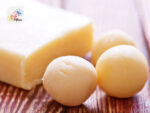

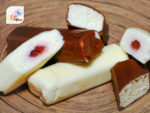
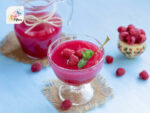

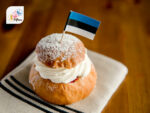


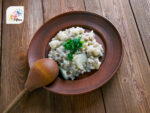
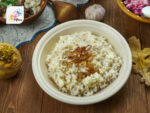


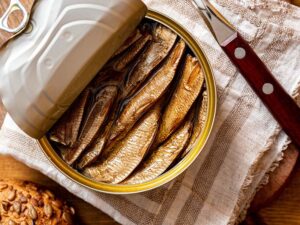
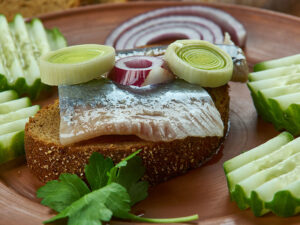
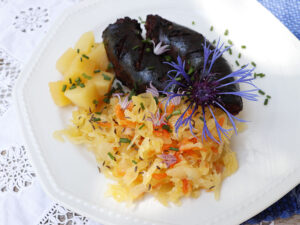
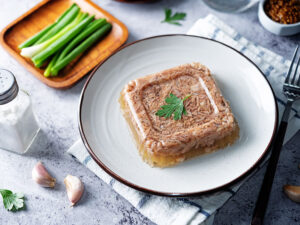
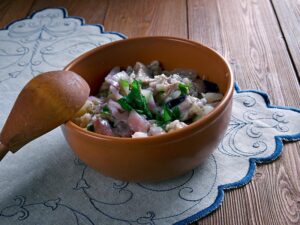
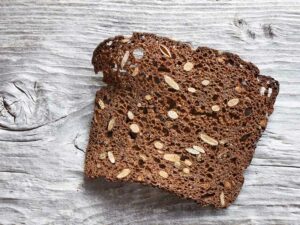
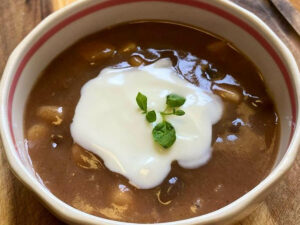
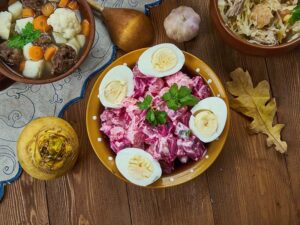
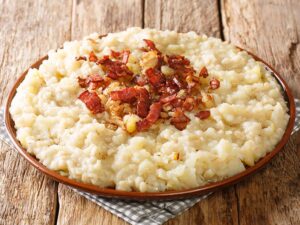


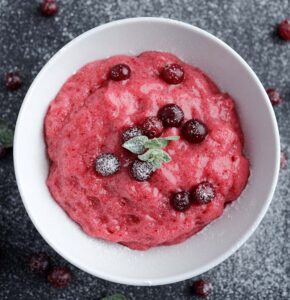

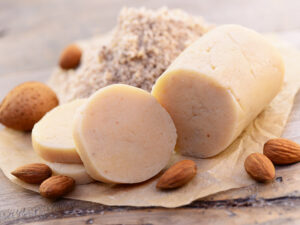
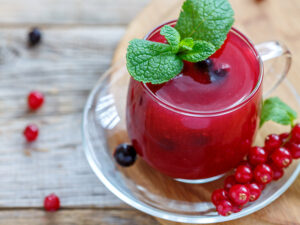
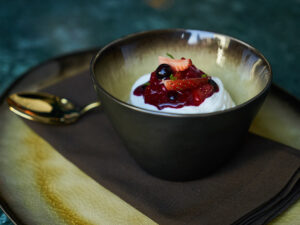

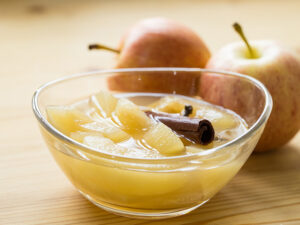
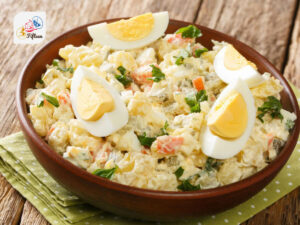

Jamie Scott
Editor in Chief, Senior Content Writer
Expertise
Home Cooking, Meal Planning, Recipe Development, Baking and Pastry, Food Editor, Cooking-video Maker, Western Food Evaluation Expert
Education
Le Cordon Bleu College of Culinary Arts
Local Community College, New York, NY
Jamie Scott is a skilled culinary expert and content creator specializing in Western cuisine. With over 15 years in the culinary field and formal training from Le Cordon Bleu, Paris, Jamie deeply understands how to blend nutrition with delicious flavors. His passion for cooking matches his commitment to making healthy eating accessible and enjoyable.
On Fifteen.net, Jamie brings a fresh perspective to classic dishes and beverages, offering readers insightful recipes, cooking tips, and a fresh view on meal planning that emphasizes taste, health, and simplicity.